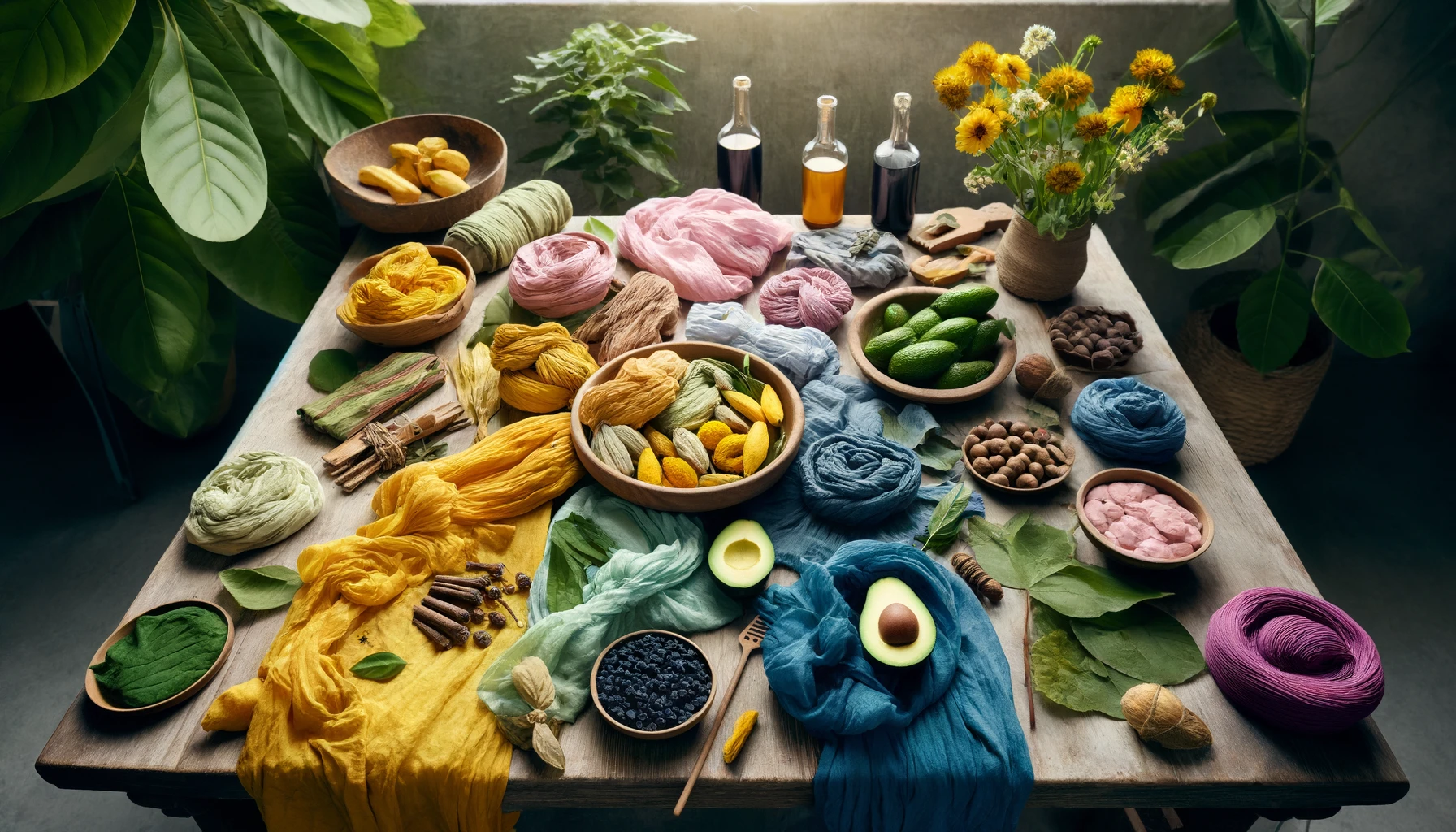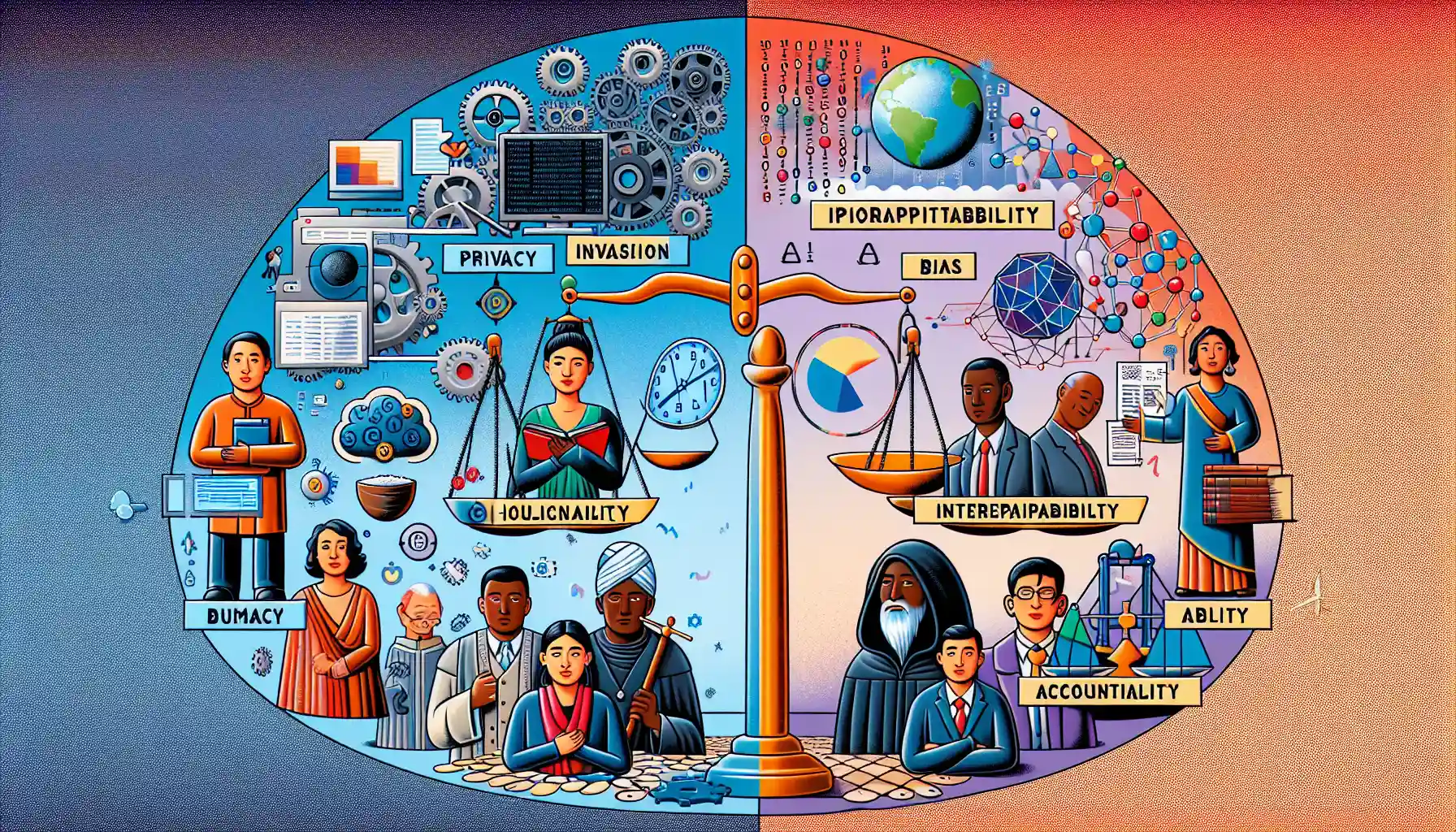The Power Of Plants: How Flora Can Influence Your Fashion Choices
In recent years, there has been a remarkable shift in the fashion industry towards incorporating nature and its elements, especially plants, as a source of inspiration. This trend, known as "botanical fashion," is more than just a passing fad. It is a profound movement that blends the beauty of plants with the aesthetics of clothing. From intricate flower identification (https://ai-plantfinder.com/) patterns to the use of sustainable, plant-based materials, the influence of plants on fashion is both profound and multifaceted. As we delve further into this topic, we will explore how plants can influence and enhance our fashion choices, leading the way to a more sustainable and nature-inspired wardrobe.

The Influence Of Nature On Fashion
Nature has always been a powerful muse for designers, artists, and fashion enthusiasts. The allure of the natural world, with its vibrant colors, intricate patterns, and diverse textures, offers endless inspiration. Historically, fashion has continuously drawn from these elements, creating trends that celebrate the beauty and complexity of the natural environment.
One of the most lasting influences of nature on fashion is the use of floral patterns. For centuries, flowers, with their delicate petals and vibrant colors, have been an integral part of fashion design.From the elaborate embroidery of the Victorian era to the bold, psychedelic prints of the 1960s, floral patterns have remained a timeless motif. Renowned fashion magazines like Vogue and Harper's Bazaar often showcase collections that highlight the enduring appeal of floral designs, underscoring their place in both historical and contemporary fashion.
Beyond floral patterns, the natural world offers a vast array of colors that designers can draw inspiration from. Earthy hues, such as deep greens, rich browns, and soft beiges, reflect the beauty of the natural landscape and create a sense of connection with the earth. These shades are not only pleasing to the eye but also versatile, making them a popular choice for various fashion designs. Designers often turn to nature for inspiration when creating new collections, as these colors evoke a sense of harmony and balance. The use of earthy tones in fashion allows for a more natural and grounded look, appealing to a wider audience. These colors help create a sense of unity with nature and can be found in various forms of clothing, from casual wear to more formal attire.
Additionally, the textures found in nature, ranging from the smoothness of a petal to the roughness of bark, have inspired fabric choices and garment design. Textiles that replicate these natural textures add depth and visual interest to clothing, enhancing the overall aesthetic experience. The tactile qualities of a garment can create a sense of connection with nature, making the wearer more attuned to their surroundings.
Sustainable Fashion And Plant-Based Materials
As the fashion industry continues to become more aware of its impact on the environment, there has been an increasing emphasis on sustainable practices and the use of environmentally friendly materials. Plant-based materials in particular are gaining popularity due to their renewable and biodegradable nature. This shift towards more sustainable practices is not only driven by environmental concerns, but also by changing consumer values and preferences.
Bamboo, hemp, and organic cotton are among the most commonly used plant-based materials in sustainable fashion. Bamboo, for example, is known for its fast growth and low need for pesticides, making it a sustainable alternative to traditional fabrics. Hemp, another versatile plant, uses little water and avoids chemical fertilizers, making it an ideal choice for eco-friendly fashion brands. Organic cotton grown without synthetic pesticides and fertilizers reduces the environmental impact of cotton production and supports healthier ecosystems.
The rise of sustainable fashion is supported by a growing number of studies and reports from respected organizations such as the Sustainable Apparel Coalition. These studies emphasize the advantages of plant-based materials, which include reduced greenhouse gas emissions, decreased water consumption, and enhanced soil health. By opting for garments made from such materials, consumers can help create a more environmentally friendly and ethical fashion industry.
In addition, plant-based materials often provide superior comfort and breathability compared to synthetic alternatives. For example, bamboo fabric is known for its softness and moisture-wicking properties, making it an excellent choice for activewear and everyday clothing. Hemp fabric, with its durability and resistance to mold, is well-suited for outdoor apparel and accessories. Organic cotton, cherished for its softness and hypoallergenic qualities, is perfect for everyday wear.
As consumers become more aware of the environmental impact of their clothing choices, there has been an increasing demand for transparency and accountability from fashion brands. With ethical considerations such as the treatment of workers and animal welfare becoming integral to consumer decisions, more and more people are choosing to support brands that prioritize sustainability and ethical practices. By opting for plant-based materials, consumers can contribute to a more responsible and sustainable fashion industry.
Ethical Considerations
The shift towards plant-based fashion also raises important ethical concerns. The fashion industry has been criticized for its negative impact on the environment, from the excessive water use in cotton production to pollution caused by synthetic dyes. By adopting plant-based materials, the industry could reduce its ecological footprint and promote more sustainable practices.
Organizations like PETA and the World Wildlife Fund work to promote ethical treatment of animals and preserve natural habitats. Using plant-based materials is in line with these goals, as it reduces reliance on products derived from animals and minimizes harm to wildlife. Production of leather and fur, for example, often involves inhumane practices that contribute to habitat destruction. Plant-based alternatives like pineapple leather and mushroom leather offer cruelty-free options without compromising on quality or aesthetics.
In addition to reducing harm to animals, choosing plant-based products can also support fair labor practices. The production and processing of plant-based materials often create employment opportunities for local communities, contributing to economic development and improving living standards. By choosing brands that prioritize ethical sourcing and fair trade, consumers can help create positive social and environmental impacts.
Furthermore, the use of plant-based materials can enhance the overall quality and longevity of garments. Unlike synthetic fabrics, which can release harmful microplastics into the environment, plant-based materials are biodegradable and do not contribute to pollution. This not only benefits the environment but also ensures that clothing remains durable and sustainable over time.
In conclusion, the impact of plants on the fashion industry is a complex and multifaceted issue that encompasses aspects such as aesthetics, sustainability, and ethics. By incorporating botanical elements and using plant-based materials in their designs, fashion designers can create beautiful and environmentally friendly garments that appeal to consumers and contribute to a more sustainable future. As we continue to explore the potential of plants in the fashion world, it is important to consider the wider implications of our actions and strive for a more ethical and responsible industry. By doing so, we can ensure that our choices have a positive impact on the environment and society as a whole.
DIY Plant Dyeing Techniques
One of the most exciting ways to incorporate the power of plants into your wardrobe is through DIY plant dyeing techniques. This hands-on approach not only allows you to create unique and customized pieces, but it also promotes sustainable fashion by using natural ingredients. Plant-based dyeing is an ancient technique that has been used for centuries to create vivid and long-lasting colors from nature. By exploring this technique, you can turn ordinary garments into stunning and eco-friendly pieces of art.

Choosing The Right Plants For Dyeing
The first step in plant dyeing is selecting the right plants. Many common plants can be used to create a wide range of colors. For example, turmeric can produce a bright yellow hue, while avocado pits can yield soft pinks and reds. Indigo, one of the most famous natural dyes, creates a deep, rich blue. Each plant offers a unique color palette, allowing for endless creative possibilities.
When choosing plants for dyeing, consider the color fastness and the type of fabric you are dyeing. Natural fibers like cotton, linen, wool, and silk are ideal for plant dyes as they absorb color more effectively than synthetic fabrics. It's also essential to use mordants—substances that help fix the dye to the fabric. Common mordants include alum, iron, and tannin, which can enhance the color and durability of the dye.
Preparation And Dyeing Process
Once you have selected your plants and mordants, the next step is to prepare the dye. Begin by chopping the plant material into small pieces and soaking them in water to release the pigments. For roots and bark, simmering the plant material for an hour or more can help extract the color. For leaves and flowers, a shorter soaking period is usually sufficient.
After the dye is prepared, strain out the plant material to leave a clear dye bath. Next, prepare the fabric by washing it thoroughly to remove any dirt or residues. Soak the fabric in a mordant solution to help the dye adhere to the fibers. Each mordant requires a different process, so be sure to follow specific instructions for the best results.
With the fabric prepped, immerse it in the dye bath. Stir the fabric occasionally to ensure even coloring and let it soak until you achieve the desired intensity. This can take anywhere from a few minutes to several hours, depending on the plant and the fabric. After dyeing, rinse the fabric in cold water until the water runs clear. Finally, hang the fabric to dry in a shaded area to prevent fading.
Creative Techniques And Patterns
Plant dyeing offers a variety of creative techniques to add patterns and textures to your garments. One popular method is shibori, a Japanese technique that involves folding, twisting, and binding the fabric before dyeing to create intricate, tie-dye-like patterns. By experimenting with different folding and binding techniques, you can achieve unique designs that reflect your personal style.
Another technique is eco-printing, which uses fresh leaves and flowers to create direct imprints on the fabric. To eco-print, arrange the plant material on the fabric, roll it tightly around a stick or pipe, and steam it for several hours. The heat transfers the pigments from the plants to the fabric, resulting in beautiful, natural imprints.
For those who prefer a more abstract look, try bundle dyeing. This method involves wrapping the fabric with various plant materials and tying it into a bundle before steaming or simmering. The result is a spontaneous, colorful pattern that captures the essence of the plants used.
Resources And Tutorials
There are many resources available to help you master plant dyeing techniques. Reputable blogs and YouTube channels, such as Rebecca Desnos and Botanical Colors, offer detailed tutorials and tips for beginners and experienced dyers alike. These platforms provide step-by-step instructions, troubleshooting advice, and creative inspiration to guide you through the dyeing process.
By exploring DIY plant dyeing techniques, you can create one-of-a-kind garments that celebrate the beauty of nature while promoting sustainable fashion practices. This hands-on approach not only enhances your wardrobe but also deepens your connection to the environment and the creative potential of plants.
Celebrity Influences
The influence of celebrities and influencers in the fashion industry cannot be underestimated. Their choices and endorsements often set trends and inspire millions of followers. In recent years, many high-profile figures have embraced plant-inspired fashion and sustainable clothing brands, bringing greater visibility to eco-friendly practices and plant-based materials.
Celebrity Endorsements And Sustainable Brands
Celebrities like Emma Watson, Meghan Markle, and Gisele Bündchen have been vocal advocates for sustainable fashion. Emma Watson, known for her commitment to ethical fashion, often showcases plant-based and eco-friendly garments on red carpets and public appearances. Her collaboration with brands like People Tree and her involvement in the Green Carpet Challenge have brought significant attention to the importance of sustainability in fashion.
Meghan Markle has also been a prominent supporter of sustainable fashion. Her choices, such as wearing dresses made from organic cotton or recycled materials, have sparked interest and admiration from fashion enthusiasts. Markle's influence extends to promoting brands that prioritize ethical sourcing and eco-friendly practices, further emphasizing the importance of sustainability in the industry.
Supermodel Gisele Bündchen, known for her environmental activism, frequently highlights the connection between fashion and nature. Bündchen's advocacy for plant-based materials and support for brands like Stella McCartney have helped raise awareness about the benefits of incorporating plants into fashion. Her influence has inspired many to consider the environmental impact of their clothing choices and seek out sustainable alternatives.
Influencer Collaborations And Social Media
In addition to celebrities, social media influencers play a crucial role in promoting plant-inspired fashion. Influencers like Aditi Mayer, Sustainable Daisy, and Venetia La Manna use their platforms to educate followers about sustainable fashion practices and showcase plant-based garments. Their collaborations with eco-friendly brands and engagement with their audiences create a ripple effect, encouraging more people to embrace sustainable fashion.
These influencers often share DIY projects, styling tips, and personal experiences with plant-based fashion, making the concept more accessible and relatable. Their authenticity and commitment to sustainability resonate with followers, fostering a community of like-minded individuals who are passionate about ethical fashion.
By highlighting the efforts of celebrities and influencers, we can see how plant-inspired fashion is gaining momentum and influencing mainstream trends. Their endorsements and advocacy help normalize sustainable practices and encourage consumers to make more conscious fashion choices.
Embracing The Intersection Of Fashion And Flora: A Sustainable Future
The intersection of fashion and flora is a testament to the creativity and adaptability of the fashion industry. As we have explored, plants offer an abundant source of inspiration and material for creating unique, sustainable, and ethical fashion choices. By embracing botanical elements and plant-based materials, we not only celebrate the beauty of nature but also contribute to a more environmentally conscious and humane fashion industry.
Incorporating plant-inspired fashion into our wardrobes begins with an appreciation for the natural world. The historical influence of nature on fashion is evident in timeless floral patterns, earthy tones, and textured fabrics. These elements connect us to the environment, evoking a sense of harmony and balance that is both visually appealing and emotionally grounding.
The rise of sustainable fashion and the use of plant-based materials such as bamboo, hemp, and organic cotton highlight the industry's shift towards more responsible practices. These materials offer numerous benefits, including reduced environmental impact, enhanced comfort, and support for ethical labor practices. By choosing garments made from plant-based materials, we can reduce our ecological footprint and promote a more sustainable future.
Ethical considerations play a crucial role in our fashion choices. The use of plant-based materials aligns with the values of animal welfare and environmental preservation, reducing the harm caused by traditional fashion practices. By supporting brands that prioritize sustainability and ethical sourcing, we can contribute to positive social and environmental outcomes, fostering a more responsible and conscious fashion industry.
DIY plant dyeing techniques provide a creative and sustainable way to personalize our wardrobes. By experimenting with natural ingredients such as turmeric, avocado pits, and indigo, we can create vibrant, eco-friendly garments that reflect our unique style. The hands-on approach of plant dyeing not only enhances our connection to nature but also promotes sustainable fashion practices.
The influence of celebrities and social media influencers has brought greater visibility to plant-inspired fashion and sustainable clothing brands. Their endorsements and advocacy have inspired millions to embrace eco-friendly practices and make more conscious fashion choices. By following their lead, we can help normalize sustainable fashion and encourage the industry to continue prioritizing ethical and environmentally friendly practices.
In summary, the power of plants in fashion is a multifaceted phenomenon that encompasses aesthetics, sustainability, and ethics. By incorporating botanical elements and plant-based materials into our fashion choices, we can create beautiful, eco-friendly garments that resonate with our values and contribute to a more sustainable future. Whether through DIY dyeing techniques, supporting ethical brands, or drawing inspiration from nature's beauty, we can all play a role in fostering a more responsible and nature-inspired fashion industry.
As you explore plant-inspired fashion, consider the broader implications of your choices. By opting for sustainable and ethical garments, you not only enhance your wardrobe but also support a movement towards a more environmentally conscious and humane fashion industry. The power of plants is not just in their aesthetic appeal but in their ability to inspire a more sustainable and ethical approach to fashion.
Explore Plant-Inspired Fashion Choices
If you're ready to incorporate the power of plants into your fashion choices, here are some actionable steps to get started:
Research and Support Sustainable Brands: Look for fashion brands that prioritize sustainability and ethical practices. Brands like Stella McCartney, People Tree, and Reformation offer a wide range of stylish, plant-based garments that align with eco-friendly values.
Experiment with DIY Plant Dyeing: Try your hand at plant dyeing techniques using natural ingredients like turmeric, avocado pits, and indigo. There are numerous online tutorials and resources available to guide you through the process and help you create unique, personalized garments.
Incorporate Floral Patterns and Earthy Tones: Embrace the timeless appeal of floral patterns and earthy tones in your wardrobe. These elements not only connect you to nature but also add a touch of elegance and sophistication to your style.
Educate Yourself on Ethical Fashion: Stay informed about the environmental and social impact of the fashion industry. Organizations like PETA, the World Wildlife Fund, and the Sustainable Apparel Coalition provide valuable insights and resources on sustainable and ethical fashion practices.
Follow Influencers and Celebrities Who Promote Sustainability: Stay inspired by following celebrities and influencers who advocate for sustainable fashion. Their endorsements and insights can help you discover new brands, styles, and practices that align with your values.
Share Your Journey: Encourage others to explore plant-inspired fashion by sharing your journey on social media. Use hashtags like #SustainableFashion, #PlantBasedFashion, and #EcoFriendlyFashion to connect with a community of like-minded individuals who are passionate about ethical and sustainable fashion.
By taking these steps, you can make a positive impact on the fashion industry and contribute to a more sustainable and nature-inspired wardrobe. Embrace the power of plants and let nature's beauty guide your fashion choices for a more responsible and eco-friendly future.
Latest news

Accessories: Useful Little Things

DIY Fashion: Transform Old Clothes Into Trendy New Pieces

Effective Multi-Factor Authentication Strategies for Safe Online Shopping

Ethical Implications of Machine Learning in Fashion Design: Challenges and Solutions

Effective Firewall Solutions to Safeguard Your Store’s Customer Data

